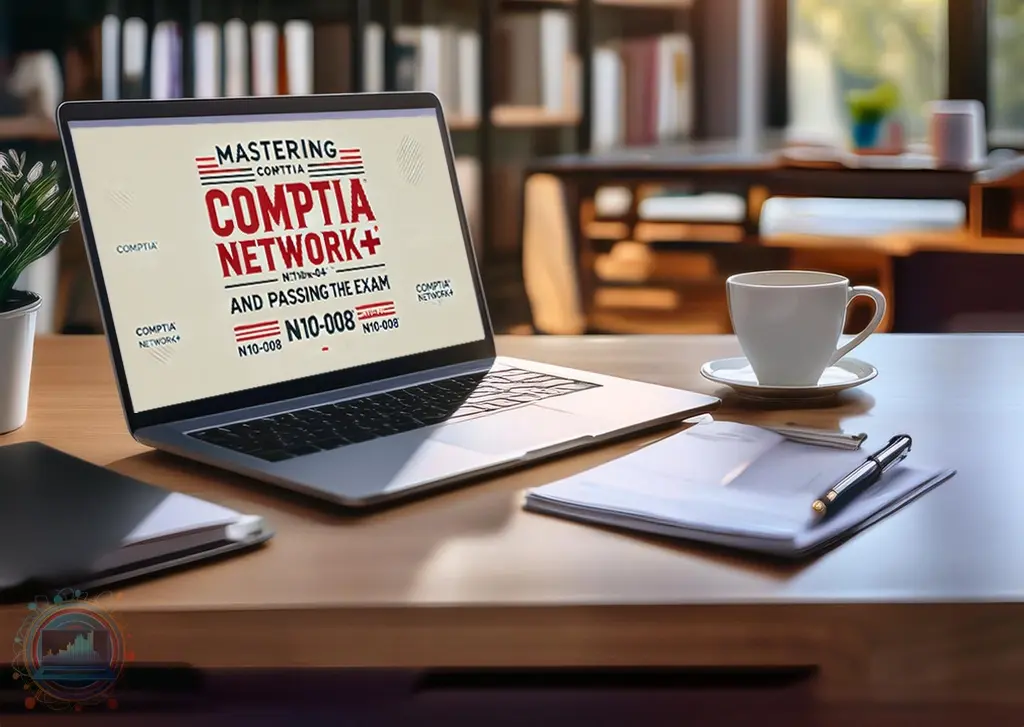
Approach Network+ Study: Strategies, Resources, and Practice Labs

Studying for the CompTIA Network+ certification requires more than just reading a textbook. To truly grasp networking concepts and be prepared for the exam, you need a strategic approach. In this guide, I’ll walk you through essential study materials, hands-on lab setups, and proven study techniques that will help you master the exam content efficiently.
Study Materials
Selecting the best resources is the foundation of effective studying. Here are the most reliable materials I recommend:
- Official CompTIA Guide – Covers all exam objectives and provides structured learning.
- Professor Messer’s Course – A valuable video series to visualize networking concepts. (Watch here)
- Practice Tests – Reinforce knowledge with Udemy, MeasureUp, and CompTIA’s resources.
- Lab Simulations – Experience real-world scenarios with Network+ Labs or a home lab. (Explore labs)
- Networking Books – Additional books like ‘Mike Meyers’ Network+ Guide’ offer detailed insights and exam tips.
Using a mix of these materials strengthens both conceptual knowledge and practical application.
Best Study Materials
Choosing high-quality study resources is key to success. Here are some of the best options:
- Official CompTIA Guide – Provides in-depth coverage of exam topics and structured lessons.
- Professor Messer’s Course – A free video-based resource covering all exam objectives. (Watch here)
- Practice Tests – Strengthen retention and test readiness with practice exams from Udemy, MeasureUp, and CompTIA.
- Lab Simulations – Gain hands-on experience with Network+ Labs or build a home lab. (Explore labs)
- Networking Books – Read ‘Mike Meyers’ Network+ Guide’ for detailed explanations and exam insights.
A combination of these materials enhances understanding and reinforces practical application. Regular review and structured learning ensure thorough exam preparation.
Home Lab Setup for Network+
Practical experience is essential for mastering networking. Setting up a home lab allows you to apply your knowledge in real-world scenarios. Here’s what you need:
- Virtual Networking Tools – Use Cisco Packet Tracer, GNS3, or EVE-NG to simulate network configurations.
- Physical Equipment – Buy used routers and switches from eBay or Amazon to practice with actual hardware.
- Networking Software – Utilize tools like Wireshark for packet analysis and PuTTY for SSH troubleshooting.
- Cloud Labs – Practice cloud networking skills with AWS, Azure, or Google Cloud.
Configuring VLANs, firewalls, and VPNs in a home lab builds hands-on expertise. This experience improves troubleshooting skills, a critical aspect of the Network+ exam.
Effective Study Techniques
Using the right study techniques helps you retain and apply information more effectively. Here are proven methods:
- Active Recall – Regularly quiz yourself instead of passively reading materials.
- Mind Mapping – Create visual diagrams to connect networking concepts.
- Flashcards – Use tools like Anki or Quizlet to reinforce definitions and acronyms.
- Spaced Repetition – Spread study sessions over time to enhance retention.
- Group Study – Discussing topics with others can deepen understanding and expose different viewpoints.
A balanced mix of reading, hands-on labs, and structured study sessions ensures better comprehension and recall on exam day.
Time Management for Network+
A well-planned study schedule improves efficiency. Here’s a structured 7-week plan:
- Weeks 1-2: Study networking fundamentals, including OSI model, subnetting, and IP addressing.
- Weeks 3-4: Learn security protocols, troubleshooting methods, and device configuration.
- Weeks 5-6: Take multiple practice exams, identify weaknesses, and review high-priority topics.
- Week 7: Revise notes, take timed exams, and reinforce hands-on experience.
During the exam:
- Read Carefully – Understand each question before answering.
- Time Management – Allocate time wisely; don’t linger too long on tough questions.
- Eliminate Wrong Answers – Narrow choices to increase accuracy.
- Prepare for PBQs – Performance-based questions test real-world problem-solving skills.
By following a structured timeline, you can avoid last-minute cramming and approach the exam with confidence.
Common Mistakes and How to Avoid Them
Many test-takers make avoidable mistakes. Here’s how to prevent them:
- Skipping Subnetting Practice – Drill subnetting calculations daily for speed and accuracy.
- Neglecting PBQs – Performance-Based Questions require hands-on skills, so practice configurations frequently.
- Over-Memorizing Without Understanding – Focus on why concepts work instead of rote memorization.
- Lack of Hands-On Experience – Practical networking skills are critical; ensure you practice in a home lab.
Recognizing and addressing these challenges early can significantly improve your exam performance.
Final Thoughts: Your Path to Network+ Success
Passing the CompTIA Network+ exam requires a mix of theoretical knowledge, practical experience, and smart study habits. By utilizing top-tier resources, setting up a home lab, and following structured study techniques, you can prepare effectively and confidently.
For official training materials and practice exams, visit CompTIA’s Network+ Training to take the next step in your certification journey.
